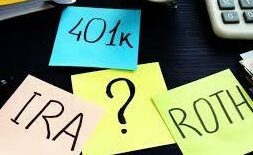The Setting Every Community Up for Retirement Enhancement (SECURE) Act was introduced in 2019 and has already had a direct impact on 401(k) and employee benefit plans. SECURE Act Version 2.0 (the Act) builds on the original legislation and became effective for 401(k) and employee benefit plans on January 1, 2023.
The Act has several provisions, and some will directly affect 401(k) and employee benefit plans. These new provisions may require additional audit work to be performed by the Plan’s 401(k) or employee benefit plan auditor, as well as additional documenting and oversight by the Plan Sponsor. As such, you might be asking yourself, “How will SECURE Act 2.0 affect my 401(k) or employee benefit plan audit?”
Relevant 401(k) or Employee Benefit Plan Provisions
Your 401(k) or employee benefit auditor is required to perform audit procedures over “relevant” plan provisions as part of the audit, but what constitutes a “relevant” plan provision? Relevant 401(k) or employee benefit plan provisions are those that relate to classes of transactions, account balances, and disclosures that have been identified as having a risk of material misstatement as part of the auditor’s risk assessment. If those 401(k) or employee benefit plan provisions affect the risk of material misstatement for the related classes of transactions, account balances, or disclosures, then the auditor is required to consider those 401(k) or employee benefit plan provisions when designing and performing audit procedures in response to the auditor’s risk assessment.
For example, as part of the auditor’s risk assessment, if the auditor identified contributions as having a risk of material misstatement at the relevant assertion level, the auditor would determine whether there are 401(k) or employee benefit plan provisions related to contributions that affect the risk of material misstatement for contributions. Because contributions are commonly determined from participation and eligibility provisions in the plan instrument, participation and eligibility provisions that affect the risk of material misstatement for contributions are required to be considered when testing contributions.
Further, a majority of the new 401(k) or employee benefit plan provisions introduced by the Act, such automatic enrollment, automatic contributions deferral increases, and expanded catch-up contribution provisions are based on 401(k) or employee benefit plan participants’ participation and eligibility provisions and will require additional work to be performed by the 401(k) or employee benefit plan auditor.
Plan Sponsor Responsibilities
As a result, Plan Sponsors for 401(k) and employee benefit plans will have additional responsibilities as their plans incorporate the 401(k) and employee benefit plan provisions of SECURE Act 2.0. These additional responsibilities include:
- Maintaining executed plan documents for the adoption of SECURE Act 2.0 and the related 401(k) or employee benefit plan provisions.
- Maintaining additional 401(k) or employee benefit plan participant records for new provisions introduced by SECRUE Act 2.0, such as those needed to support participant automatic enrollment and automatic deferral increases or participant elections to opt out of those provisions.
- Documenting policies and procedures over how the 401(k) or employee benefit plan ensures plan participants are eligible and receiving their benefits from the additional 401(k) or employee benefit plan provisions.
- Walking the 401(k) or employee benefit plan auditor through your processes and procedures over the new plan provisions.
- Contacting the 401(k) or employee benefit plan auditor early in the audit planning phase and communicating the new provisions that are in place and ensuring everyone is on the same page about the audit documentation required to support the additional audit procedures.
In summary, not all plan provisions will be considered relevant for purposes of a 401(k) or employee benefit plan audit. However, being proactive in the documenting and implementation of SECURE Act 2.0 provisions will help ensure a smooth 401(k) or employee benefit plan audit and that the 401(k) or employee benefit plan complies with its plan document and IRS and Department of Labor rules and regulations.

